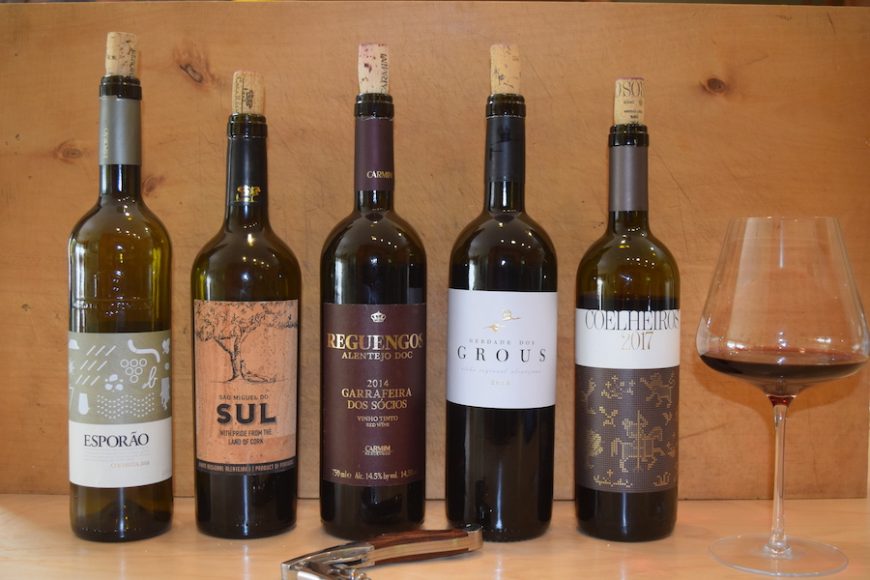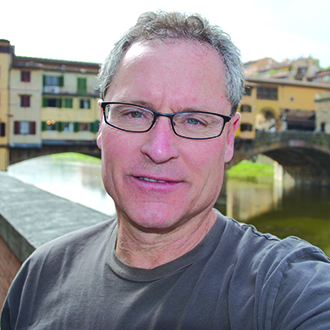When is the last time you opened five bottles of wine at once — just for you? Last night I participated in a Zoom webinar, hosted by the Wines of Alentejo of southern Portugal. In these Covid-crazy times, the wine world is reinventing itself, like everyone and everything else. It’s a bit funny, because anecdotally I am hearing of wine sales in this shutdown meeting and exceeding previous high-water marks. So if sales are booming, why the need for additional educational and advertising attention? The answer probably is that people tend to buy what they can easily find and what they already know. Purchasing wine from unknown origins or unheard of mystery grapes can be daunting for some and a bit prohibitive for others.
In the past, several of the 50 attendees of this webinar, most of whom I have met or was at least familiar with, would have received a plane ticket and a press invite to fly to Lisbon where a driver would usher them to the Alentejo region. There winemakers and PR people would pour many wines, show them the geological, historical and cultural specifics of the region, and they’d all dine in wonderful restaurants with precise food and wine pairings unique to the region. By mid-July I would have likely visited three, maybe four, international wine regions and returned home to reflect and write about my discoveries. But that is all on hold for now.
Twenty-five years ago, there were few organic or sustainable wine producers in the world and their wines were largely uninteresting. Most organic wine producers back then were farmers of other agricultural products first, and they saw a demand for organic wines and went to work. They didn’t know the intricacies of grape growing or wine production and their resultant wine showed the lack of experience. But the wine world took notice of the interest and slowly moved toward organic and sustainable production. Currently, worldwide, there is increased attention to pesticide and herbicide reduction, creating an environment to attract beneficial predators to keep predictable vineyard pests to manageable numbers and to create and maintain a living vineyard. And these resultant wines show lifetimes of experience.
In the past five years the Wines of Alentejo people have initiated their own sustainable practices abbreviated as WASP (Wines of Alentejo Sustainable Program). In 1995, the Alentejo region had just 45 producers. Today the region is exploding with 1,800 grape growers and 260 wineries. Alentejo represents 30% of all of Portugal’s land mass and has been producing wine for more than 4,000 years with Roman, Christian and Moorish influences evident everywhere. There are many UNESCO World Heritage sites, notably Évora and Elvas, two ancient cities there, with Roman temple ruins, aqueducts, castles and fortifications. Wine producers involved in WASP account for 45% of the regional vineyards. Alentejo is hot and dry, which makes organic and sustainable practices relatively easy. Wet regions are more susceptible to fungal problems needing attention. But because of global warming these producers feel vulnerable to rising temperatures and the scorching of their land and grapes. Healthy soils created by introducing organic matter, such as manure and cuttings and leaves, will be better able to withstand climbing temps.
This webinar was hosted by Evan Goldstein, master sommelier, João Barroso, director of sustainability and Tiago Caravana, director of sales of Wines of Alentejo USA. Goldstein told us, “Alentejo, in centuries of wine production but just a few short years with WASP, has become one of the most progressive wine regions in the world regarding sustainability.” We were given a solid background in the region and then invited to taste the wines I had opened a bit earlier. The ratio of regional wine production is 25% white, 73.1% red and 1.9% Rosé. Esporão Colheita 2018 white wine was my first taste, showing a crisp acidity, lively tropical fresh fruit with a long and lingering mouthfeel. My next pour was São Miguel do Sul, a brooding red wine expressing dark fruit, particularly blackberry with a backdrop of pleasant tannic dustiness. Herdade dos Grous 2018 presented a fresh red cherry with a lovely spicy cinnamon accent. The Coelheiros from 2017 showed raspberry and blackberry freshness and hints of balsamic vinegar with a pleasant earthiness contributing to finish length. And the final red, my personal favorite of the four reds, was Reguengos Garrafeira dos Sócios from the 2014 harvest. Showing a tart blackberry and a spiciness of pepper and licorice, as well as a great tannic and acid balance with a generous nose and palate, this lively red will impress.
All of these wines may be difficult to find. You may have to request or order them. Bigger stores may have a small selection of Alentejo wines but certainly any Portuguese restaurant should have many options. These are lovely wines, largely sustainable and leaning toward organic, from a rich historical region and well-priced. Take a rewarding taste trip to Portugal.
Write me at doug@dougpaulding.com.


